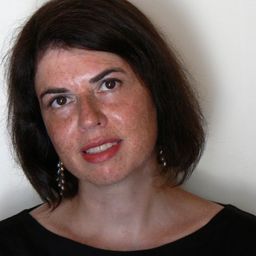11.30 Social Media and the Archiving of Divergent Representations of Intangible Heritage
Mon statut pour la session
This paper will address the emerging dynamic between digital intangible heritage and social media. This study will argue that YouTube’s potential to safeguard heritage produces a paradoxical heritage archive with competing ends. This platform enables the archiving of divergent heritage representations, fostering greater democratic representation through social media. Therefore YouTube is forging a public archive that facilitates the dissemination of cultural diversity. At the same time, this public archive thrives on a platform that is designed to monetize the labour of YouTube users through the personalization of media. The dissemination of democratic cultural representations within a commercial platform is explored through the transmission of intangible heritage videos on YouTube. These videos can potentially counter official narratives proposed by nation-states through UNESCO. This questioning of official heritage emerges because YouTube archives videos of intangible heritage uploaded by UNESCO as well as other institutions, individuals, and communities. The storing of UNESCO and user-generated videos of intangible cultural heritage is creating informal archives that are constantly changing in accordance with user-generated content and algorithms.
Social archiving can call into question the UNESCO-sanctioned narratives of intangible heritage advanced by national governments through the stories transmitted in user-generated videos, metadata and posted texts. This archiving can further challenge national heritage stories by positioning specific videos on shifting lists assembled by search engines through algorithms and user-generated input. YouTube’s capacity to counteract UNESCO-supported narratives of intangible heritage nevertheless yields to the politics of code. This platform is under the authority of algorithms and policies that Google designs to convert the labour and social interaction of YouTube users into corporate profits. Scholars addressing the integration of social media by museums raise theoretical concerns that reflect to a certain degree YouTube’s dissemination of heritage via search engines and algorithms: this platform as well as the use of social media by museums question who has the authority to define heritage. Through its listing and archiving of heritage videos uploaded by an array of users, YouTube enables user-generated content to challenge the ways representatives of nation states represent national heritage.
Research on the incorporation of social media by museums foregrounds how digital platforms can restructure the relation between the centralized authority of the museum and its audience and users by integrating user-generated content within curatorial content. One of these concerns includes the relation between curatorial content and audience-generated content in museums against the backdrop of technologies of algorithms and search engines. Museum collections can counter the visual politics of search engines and algorithms geared for corporate interests. Museums could bring to the fore images that are outside the scope of consumer visibility produced by dominant search engines, most notably Google, or could juxtapose unassociated images to uncover new narrative potentialities. Whether the curatorial voice and authority of museums combined with user-generated input will be able to provide more democratic representations of intangible heritage than those currently produced by YouTube’s search engine, which combines user-generated content and algorithms, is an issue for further study.
Currently, YouTube enables a democratization of heritage by facilitating novel forms of political contestation between the diversity of representations of heritage uploaded by users and those uploaded by nation-states through UNESCO. The potential of YouTube to provide alternative intangible heritage perspectives is approached through various case studies including the Mevlevi Sema (or whirling dervish) Ceremony of Turkey and the Tumba Francesa of Cuba. In the process of providing alternative perspectives on intangible heritage, this democratization becomes entangled with social media’s commercial mechanisms, shifting the political economy of the mediated heritage landscape to one controlled by corporate policies and technologies.
